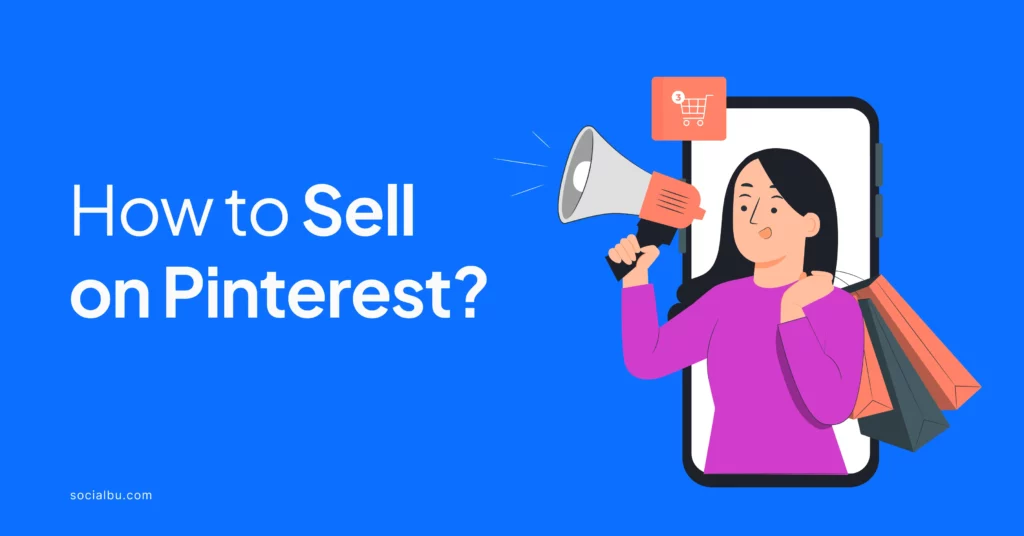Pinterest, the go-to platform for finding inspiration for every niche, has 522 million users worldwide today. This gives you all the more reason to learn how to sell on Pinterest. Yes, the Platform is no longer a place to get DIY, recipes, and home decor ideas but has evolved into a shopping hub.
With millions of people scrolling and shopping, it’s no wonder businesses are lining up to get in on the action. If you’re a beginner wondering, “Is selling on Pinterest worth it?” this article will show you why it is and how to do it.
Let’s get started!
Setting Up for Success
Before you learn how to sell on Pinterest for free, you must set up your Pinterest Business account for success. This offers several advantages over a personal account, including analytics, ads, and other features that maximize your selling potential on the platform.
You can easily convert your personal Pinterest profile to a business account or create a new one from scratch.
Branding Your Profile
A well-branded profile enhances your credibility and encourages users to engage with your content and explore your offerings.
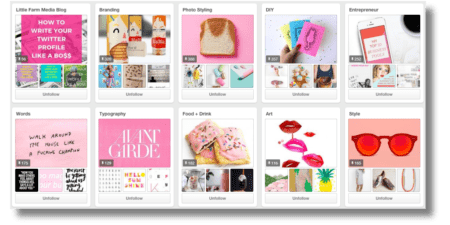
Start by selecting a professional profile photo that represents your brand. This may include a banner, logo or a relevant image. Creating a visual identity will help users recognize your brand across the platform.
Next, craft a compelling bio that communicates what your business offers and its unique value proposition. Additionally, create cover boards that showcase your best products or services.
Linking and Verifying Your Website
Another essential step is linking and verifying your website on Pinterest. This lets you track your content’s performance on Pinterest and gain insights into how users interact with your brand.
To link your website to your Pinterest Business account, follow these steps:
- Go to your Pinterest Business account settings: Click on your profile icon in the top right corner and select “Settings.”
- Enter your website URL: In the “Claim” section, enter your website URL and click “Claim Website.”
- Verify your website: Pinterest will provide you with a meta tag or an HTML file to upload to your website. Follow the instructions to add the meta tag to your website’s header or upload the HTML file to your web server.
- Complete the verification: Once you have added the meta tag or uploaded the file, return to Pinterest and click “Claim.” Pinterest will verify your website, granting you access to additional features, such as seeing analytics for your website’s pins.
Understanding Your Target Audience
Utilizing Pinterest Analytics can provide valuable insights into your audience’s age, gender, location, and interests.
Taking the time to analyze your audience’s demographics, preferences, and behaviours allows you to create a focused strategy that drives results. This understanding is essential for crafting messages that connect with your audience and encourage them to take action.
Furthermore, customer personas help you tailor your content and marketing strategies to meet the specific needs of your audience. This targeted approach increases the chances of engagement and conversion, so your content resonates more with those who see it.
Creating Compelling Visuals
As a highly visual platform, Pinterest relies on eye-catching images and videos to capture user attention and drive engagement. When users scroll through their feeds, they are drawn to content that is aesthetically pleasing, informative, and relevant to their interests.
Thus, high-quality visuals make your pins stand out and convey professionalism and trustworthiness. These are essential for building brand credibility and driving sales.
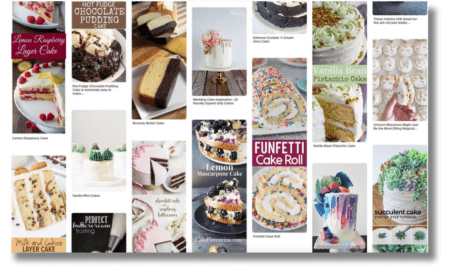
When creating visual content for Pinterest, consider the types of pins that perform well on the platform. Some examples include:
- Infographics: Present information in a visually appealing and easily digestible format.
- Lifestyle images: Showcase your products in real-world settings, helping users imagine how they might use them.
- Product photos are essential for showcasing your offerings in detail, allowing users to see the features and benefits clearly.
- Step-by-step tutorials: Demonstrate how to use your products or services through images.
- Inspirational quotes: Overlay text on images to share motivational or thought-provoking messages.
- Behind-the-scenes shots: Give users a glimpse into your brand’s story and values.
The key is experimenting with different types of visual content to see what resonates best with your target audience.
Optimizing for Pinterest SEO
Pinterest isn’t just a digital pinboard; it’s a powerful search engine in its own right. Therefore, you need to think like an SEO pro to harness its potential truly. Use Pinterest’s search bar to identify relevant keywords related to your niche.
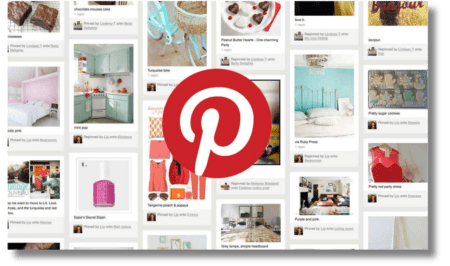
Next, incorporate keywords strategically into your pin titles, descriptions, and board names. Doing so will boost your visibility and attract a wider audience. Ultimately, this will help Pinterest understand your content and who it’s for.
Remember, every pin is a potential lead, and keywords can improve your chances of appearing in search results.
Leveraging Pinterest Features
Pinterest offers some interesting features you can easily sell as a beginner. Let’s explore each of them right here.
Rich Pins
Rich Pins are a powerful feature that enhances the visibility and engagement of your content on Pinterest. These pins provide additional information directly on the pin itself, making them more informative and engaging for users.
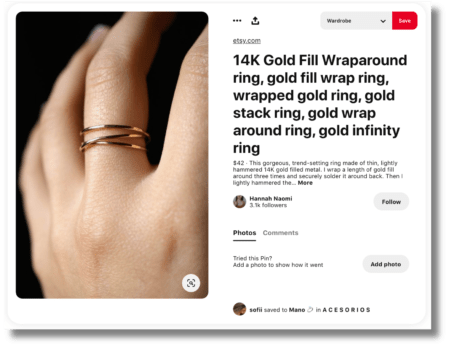
There are three types of Rich Pins: Product, Recipe, and Article Pins.
- Product Pins display real-time pricing, availability, and product descriptions, making it easier for users to make purchasing decisions.
- Recipe Pins include cooking times, ingredient lists, and serving sizes, providing valuable information for food-related content.
- Article Pins feature headlines, author names, and a brief description, helping users find and engage with your blog posts.
To enable Rich Pins, you must verify your website and add the appropriate metadata to your content. Once set up, Rich Pins can significantly improve your content’s visibility, drive more traffic to your website, and enhance user engagement. All of this ultimately supports your sales goals.
Use Promoted Pins
Promoted Pins are Pinterest’s paid advertising option, allowing businesses to increase the reach and visibility of their content. By promoting pins based on keywords, interests, and demographics, you can target specific audiences.
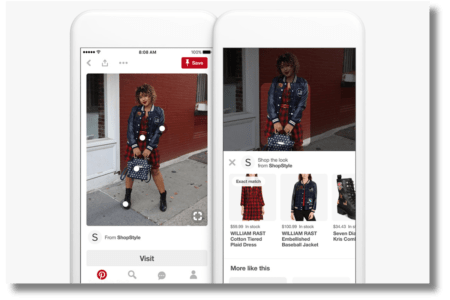
This targeted approach ensures that your pins are shown to users who will likely engage with your content and convert into customers. Moreover, Promoted Pins offer several benefits, such as increased reach, cost-effectiveness, flexibility, and measurable results.
They also enable you to amplify your content’s visibility and drive more traffic and sales to your website or online store.
Organize Pins into Catalogs
Pinterest’s Catalogs feature allows you to showcase multiple products in a visually appealing and organized manner. Creating a catalogue lets you upload your product feed and have Pinterest automatically generate pins for each item.
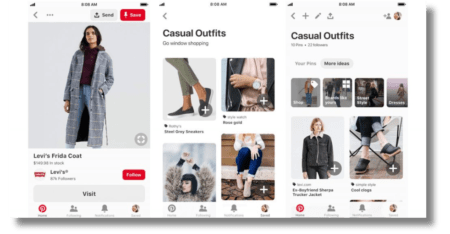
Besides, organizing your products into a catalogue creates a cohesive and visually appealing showcase of your offerings, making it easier for users to discover and purchase from your brand.
This streamlined process saves time and ensures that your entire product range is represented on the platform.
Tag Products in Pins
The tagging feature on Pinterest allows you to make specific products within a pin shoppable, enabling users to purchase directly from the platform. First, a product catalogue must be set up to provide the necessary product data for tagging.
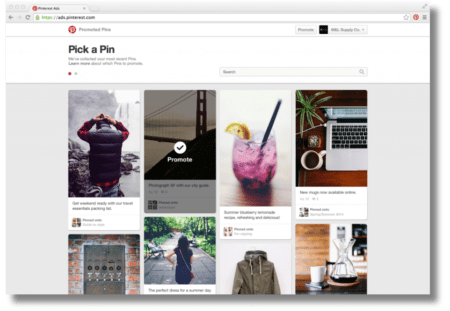
You can also use the tagging tool to identify and link specific products within your pin images to their corresponding product pages. Additionally, enable Rich Pins or use Promoted Pins to boost the visibility of your tagged product pins when possible. This will help in driving traffic to your online store.
Nonetheless, tagging products in your pins creates a seamless shopping experience for users. It allows them to easily discover and purchase your offerings without leaving Pinterest.
Sharing User-Generated Content (UGC)
UGC lets you turn people who have already tried your products into your biggest promoters by showcasing their creative uses of them. Plus, it’s free advertising.
Share users’ love for your products through photos and videos. This builds trust and authenticity and inspires others to buy. Moreover, you can level up by using UGC as Shop the Look Pins or promoting the content to gain attention from more target audiences.
Additionally, setting up influencer marketing campaigns to capitalize on user-generated content is an excellent idea for selling on Pinterest.
Selling on Pinterest Without a Website
While having a website can certainly boost your sales on Pinterest, it’s not a strict requirement. Here’s how to sell on Pinterest without a website – so don’t give yourself any excuses to leverage the platform:
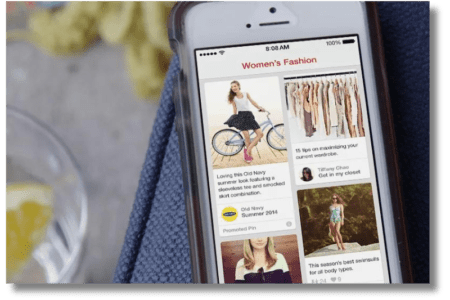
- Product Pins: These allow you to showcase products directly on Pinterest, linking to your product page on multi-vendor e-commerce platform like Etsy, Amazon, or eBay.
- Affiliate Marketing: Promote products by sharing affiliate links in your pin descriptions.
- Drive Traffic to Social Media: Direct users to your Instagram or Facebook page for purchases or inquiries.
- Offer Services: If you provide services, use Pinterest to showcase your work and include a call-to-action to contact you.
Nevertheless, creating high-quality, visually appealing pins and engaging with your audience is crucial for success on Pinterest, even if you don’t have a website.
Conclusion
To sum up, selling on Pinterest offers businesses a unique opportunity to tap into a highly engaged audience actively seeking inspiration and products. The platform is a powerful visual search engine where users discover new ideas and make purchasing decisions.
Since it offers a huge potential audience for your products, Pinterest is a great place for beginners to start selling online. Thus, by following the steps in this guide, you can create a successful selling strategy on Pinterest, even if you’re new to the platform.
Whether you’re selling fashion, home decor, or electronics, the Pinterest shopping app can help your sales soar. Furthermore, you can easily schedule your pins using SocialBu to stay consistent on the platform.
FAQS
Can I sell directly from Pinterest?
Yes, you can sell directly from Pinterest using features like Product Pins, which allow users to purchase items directly from your pins. To do this, you need to have a Pinterest Business account and connect it to your online store or use an e-commerce platform that integrates with Pinterest.
Does it cost to sell on Pinterest?
There is no fees for selling on Pinterest. However, if you choose to run paid advertising campaigns, such as Promoted Pins, there will be costs associated with those ads based on your budget.
How do I create a sale on Pinterest?
To create a sale on Pinterest, start by setting up a Pinterest Business account and linking it to your online store. You can then upload your product catalogue or enable Rich Pins to showcase your products. Create engaging pins highlighting your items, and consider using Promoted Pins to increase visibility.
How do I sell my designs on Pinterest?
To sell your designs on Pinterest, first create a Pinterest Business account and link it to your online store where your designs are available. Use high-quality images of your designs and optimize your pins with relevant keywords. You can also create boards that showcase your designs.
How to sell on Pinterest with Shopify?
Simply connect your Shopify store to automatically sync your products and create visually appealing Product Pins. These pins will showcase your products directly on Pinterest, allowing customers to purchase easily.
